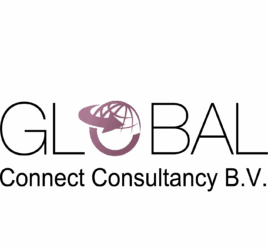
As part of the article series “Economic growth forecasts of 2024”, today’s article brings the focus on South Korea. Being the most trending country worldwide recently due to its music and film industries, many people are keeping an eye on South Korea and how the country was able to develop at a fast speed in the last decade. Therefore, today we delve into the forecasts and policies for economic growth in South Korea for 2024.
The Korean economy is gradually recovering from its recent slowdown, supported by strong export growth. However, modest growth in monthly industrial production indicators suggests that the high growth in the first quarter may not be sustainable. The Organization for Economic Co-operation and Development (OECD) predicts that South Korea’s economy will grow more rapidly than previously anticipated, driven by recoveries in consumer spending and investment later this year, as well as strong export growth led by semiconductor chips. In the most recent OECD Economic Outlook report, the OECD projected South Korea’s gross domestic product (GDP) to increase by 2.6% in 2024, up from 1.3% growth in the previous year, and to moderate to 2.2% in 2025.
High interest rates have hindered a clear recovery in domestic demand for consumption and investment. These rates have negatively impacted domestic demand with a lag, while rapid inflation has stagnated real purchasing power, contributing to sluggish consumption. Private consumption and equipment investment saw minimal increases, and while construction investment temporarily surged due to increased projects, the decline in construction orders indicates a likely continued slowdown.
Exports continue to recover, particularly in semiconductors, helping to alleviate the economic downturn. As global semiconductor transactions surged and the slowdown in world trade volume eased, Korea’s semiconductor exports increased significantly. This has expanded the current account surplus, with net foreign assets remaining high, near 50% of GDP, indicating strong external economic health.
Inflation is slowing due to weak domestic demand, and employment growth has moderated. Favorable export conditions are expected to persist as the global economy maintains moderate growth into 2024-2025, with semiconductor activity continuing to expand. Global semiconductor transactions are projected to rebound significantly in 2024 and show high growth in 2025. Concerns about a hard landing of the Chinese economy have eased, reducing short-term risks to the Korean economy. However, geopolitical tensions in the Middle East could delay economic recovery if international oil prices surge, leading to higher production costs and weakened real purchasing power.
Given these conditions, the Korean economy is expected to gradually enter a recovery phase, driven by strong export growth. With the easing of the global trade slowdown and continued growth in semiconductor activity, exports are projected to surge, driving economic recovery. Domestic demand is expected to gradually improve as the impact of prolonged high interest rates diminishes and income conditions improve, supported by the recovery in export volumes and prices.
Policy Recommendations
Fiscal Policy
Maintaining fiscal soundness by gradually reducing the deficit in the operational fiscal balance is essential amid the anticipated gradual economic recovery. The need for additional economic stimulus diminishes during a phase of gradual economic recovery. The operational fiscal balance deficit has exceeded the government’s proposed fiscal rule of 3% of GDP in recent years; efforts to reduce the deficit should begin even before the fiscal rule is introduced. During normal times, fiscal space should be secured by expanding tax revenue and managing total expenditures, while reforming the expenditure structure to accommodate rapid demographic shifts.
Monetary Policy
Monetary policy should gradually ease from the current tight stance to a neutral level as inflation converges to the target level. With core inflation trends steadily declining toward the 2% target, concerns over persistently high inflation have been significantly alleviated. As high interest rates continue to pressure domestic demand, a gradual adjustment of monetary tightening is advisable once the inflation rate converges to the target level. Monetary policy should focus on medium-term inflation stability and avoid overreacting to temporary price fluctuations in volatile items like agricultural and petroleum products. Korea’s monetary policy should be conducted based on its own economic and inflation trends, rather than synchronizing with the policy stances of other countries with different conditions.
Financial Policy
Given that concerns over systemic risk in the financial market are not significantly high, financial policy should reinforce the principle of self-responsibility among economic agents. Prudential indicators for both the banking and savings bank sectors exceed regulatory requirements, indicating a low risk of systemic financial market instability. However, rising delinquency rates for household and business loans and high delinquency rates for real estate project financing in the securities industry suggest persistent insolvency risks for some financial institutions. Preventing moral hazard and strengthening self-accountability are necessary; insolvent companies and financial institutions should aim for financial normalization through asset liquidation. While improving regulations to manage borrower-level financial soundness, policies that may distort efficient resource allocation in the financial market should be avoided.
References
Kang, K.-M., & Huh, S.-M. (2024, May 02). OECD sharply revises up S.Korea GDP forecast after strong Q1. Retrieved from The Korea Economic Daily: https://www.kedglobal.com/economy/newsView/ked202405020014
Korea Development Institute. (2024). KDI Economic Outlook 2024-1st Half. Seoul: Korea Development Institute.
